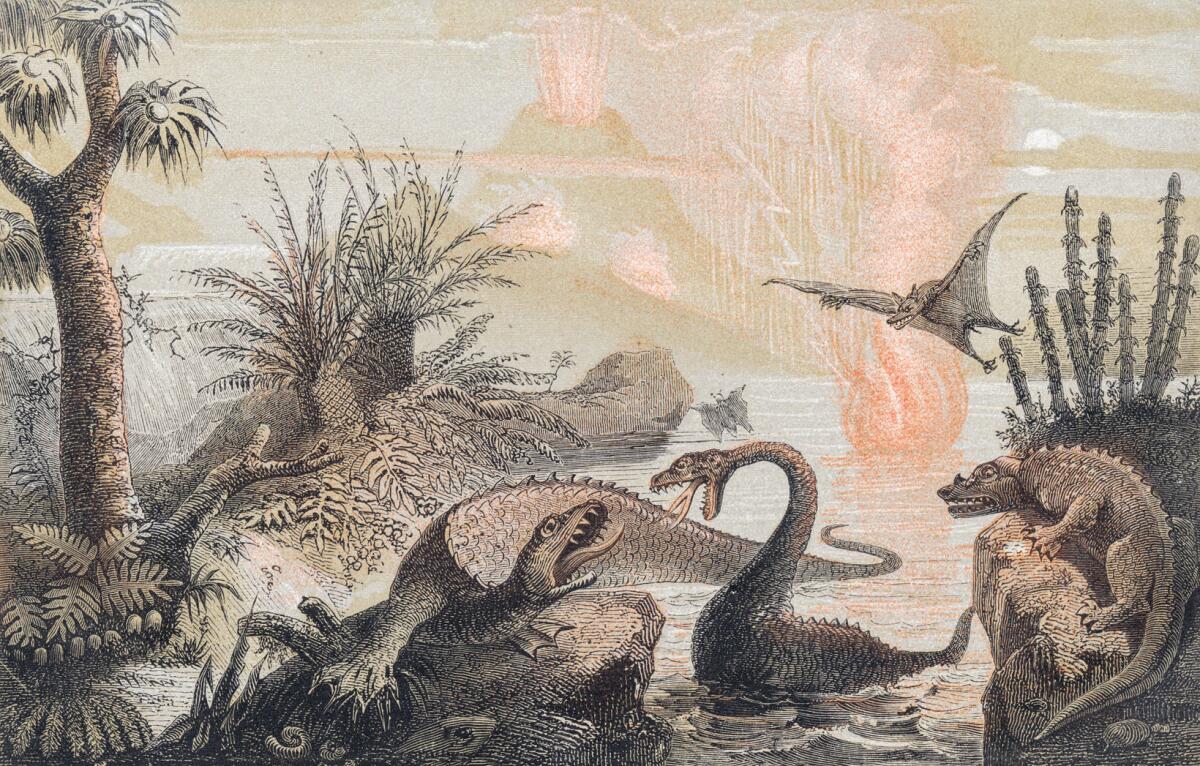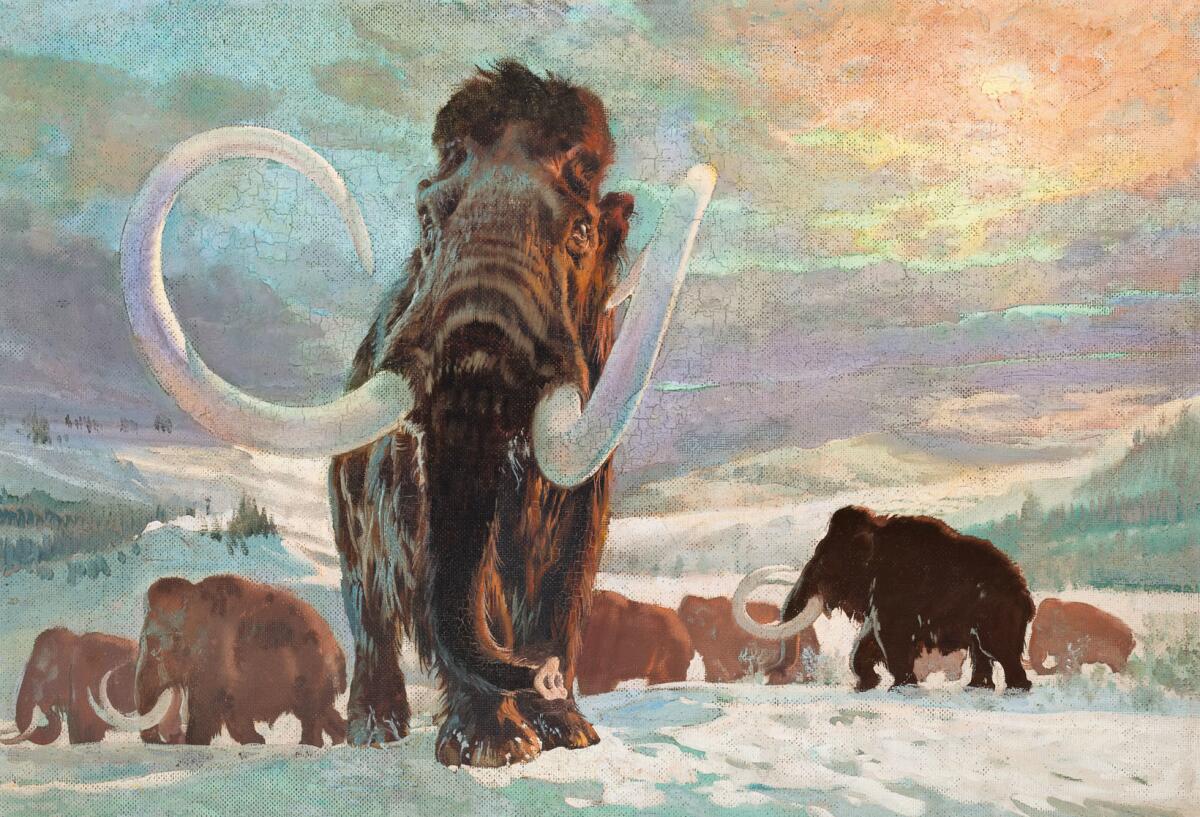The art of extinction: Why a dinosaur painted in Russia looks different from one painted in France
Art historian Zoë Lescaze’s new book originated from one belief: that our “most dearly held notions about the prehistoric world are artistic inventions.”
Published by Taschen, Lescaze’s “Paleoart: Visions of the Prehistoric Past” features more than 200 stunning works by artists attempting to render dinosaurs based on fossil records and other scientific materials available to them in whatever decade or era they happened to be working.
What makes these works particularly fascinating, Lescaze said, is that the images are very much informed by the cultural setting of the artists. A dinosaur painted in Russia may appear quite different from the same dinosaur painted in occupied France or in South America.
“The bones are a blank slate on which artists can channel their cultural preoccupations,” Lescaze said, adding that artistic movements also come into play. The book features dinosaurs painted in various styles including Art Nouveau and Fauvism.

Lescaze discovered that a huge amount of work created behind the Iron Curtain in Soviet Russia had never been reproduced or professionally photographed. This led her to one of her favorite artists in the book, Konstantin Konstantinovich Flyorov. She came to love his work because he used “extremely audacious shades of marigold and saffron, and the scientific aspect seemed to be an afterthought.”

Paleoart has proved to be a notably undervalued genre. A new fossil discovery can instantly render older bodies of work obsolete.
“I saw paintings by Charles Knight, who is probably one of the most famous paleoartists, that only existed because museum employees salvaged them from dumpsters,” Lescaze said.

MORE ART AND ARCHITECTURE:
Article index for Pacific Standard Time: L.A./L.A.
Has former NEA target Ron Athey bled enough for his art?
Herzog & de Meuron designs for a massive campus near the Getty Center
The biggest entertainment stories
Get our big stories about Hollywood, film, television, music, arts, culture and more right in your inbox as soon as they publish.
You may occasionally receive promotional content from the Los Angeles Times.








